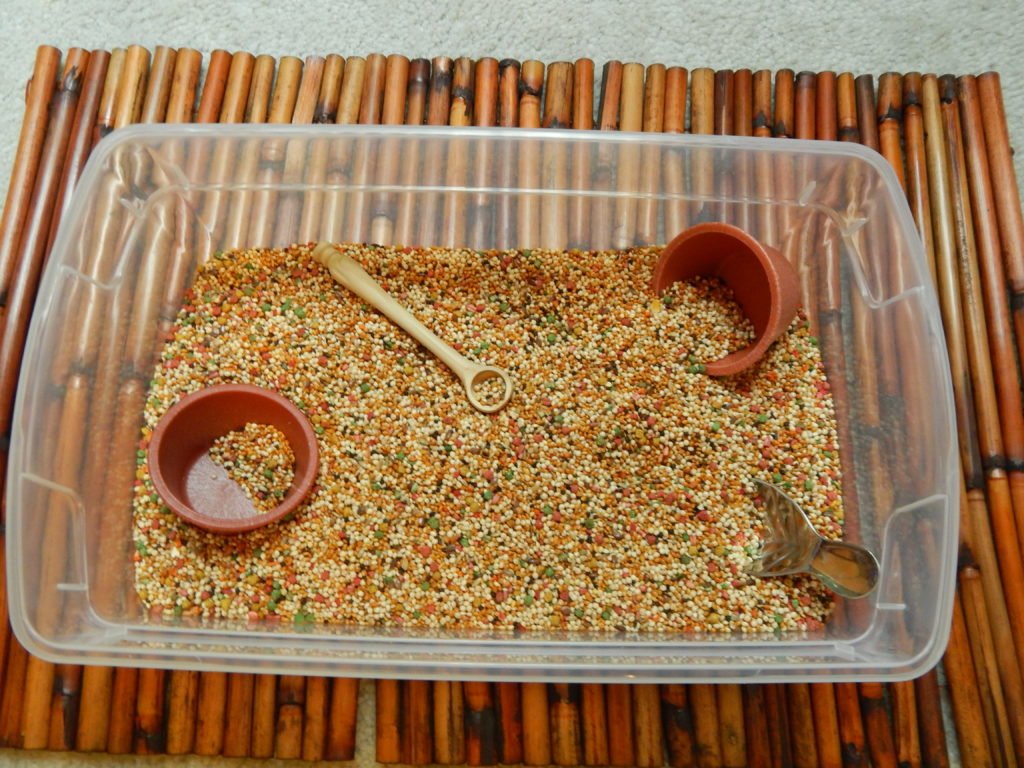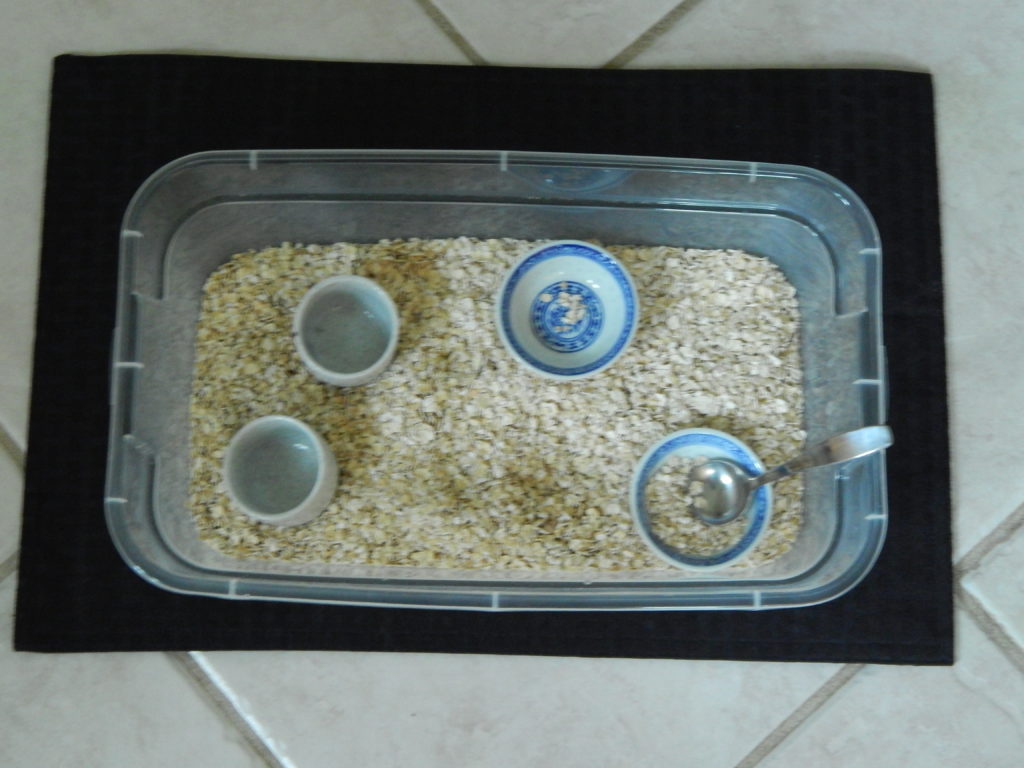It’s October and I am going to start a new series. I LOVE process art and what it brings to children. It allows children to experiment, create, and use all of their senses. It isn’t about the product; it is about the beautiful experience … the process. This month we are going to focus on sensory materials. I am going to share how to create your own base sensory materials and then later, how to use them to build different types of sensory tubs. All of the sensory materials were tested, tried, often re-tried again and again to see which ones worked best and which ones did not.
Sensory base materials can be simple and natural. These are beautiful and bring in the warm and neutral colors often associated with Montessori and Waldorf programs.
As I wrote this book: Process Art: Sensory Experiences, I had color, materials, and paper towels loaded with drying products all over the house filling room after room. It was a very fun, creative, and messy process. I’ve included hints to contain the mess throughout the activities. Just remember, experiential learning can be messy … and that is just fine! Come along for the journey, build your sensory materials and get creative.
First I’ll show you some examples of how the sensory base material can be used. It is a foundation on which you can build your sensory experiences.

This examples uses bird seed as a base for a sensory activity. I love the colors and texture of the tiny seeds! You have to put your hands in and feel to really understand how amazing this base is.

This base is a simple foundation of oatmeal that can be used as a scooping activity. This combines Montessori Practical Life with Process Art and Sensory Experiences.

This sensory tub includes a base of colored rice. This creates a colorful foundation for building a Valentine themed sensory tub. For this series of posts, I’m going to focus on creating colorful materials to create the foundation for your sensory experiences and spark your creative imagination.
Creating Colorful Sensory Base Materials

Creating your own sensory materials is fun and easy. If it is possible, allow the children to join you in making the materials. Creating with color and textures adds even more learning to the process of the sensory tubs. Most of the materials used in their basic natural form can also be enhanced with color and scent for more complex sensory materials.
Some of the materials that work best, and are used in the book include: rice, Epson salt, grits, dried beans, and peas. The dried beans and peas that work best include: garbanzo beans (or chickpeas), tiny navy beans, large Lima beans, black eyed peas and similar items found at your local grocery store.

When designing your sensory tubs, think about the different shapes and textures as well as the creative colors that you will use. The methods used to color and enhance the sensory elements of the products vary based on the characteristics of the base product used. Some of the products work best with a wet based color while others work better with a minimal amount of liquid in the process. In addition, some of the base materials used in the natural sensory tubs do not lend themselves well to adding color and other visual elements. An example is the dry pasta which is a good product for natural play; however, when mixed with the color methods used here, it did not produce a desirable result.
Through the process of creating this unit, many different methods and materials were used. The projects in the chapter only include the materials and processes which worked well and created final materials that are visually appealing, have a good texture, remain stable, and were re-usable for numerous playtimes. The final products produced do not leave substantial residue or color on the skin.
The methods demonstrated here also allow you to use materials in their original form and with their natural color. Once the children have spent significant time enjoying those sensory materials, you can take the same basic products and enhance them to create a colorful sensory experience with new accessories for an entirely different experience. If the children are allowed to participate in the process, there is an even greater learning benefit. Just as in the first book of this series, Process Art: Paint, the value of the process is the primary factor and the purpose rather than the final product.
These colorful and fun textured materials can even be used a third time. After you have finished using the sensory tubs, you can store them sealed in their box for using again later, or you can choose to use them in art projects. These materials make beautiful and creative resources to use in children’s art projects.
I’ll share instructions for creating some of the materials from my book on the upcoming posts this month.

You can find many more activities in the book which is available at Amazon.com. Direct links to all of the books are on the page labeled “Dr. Andrea’s Books.”



